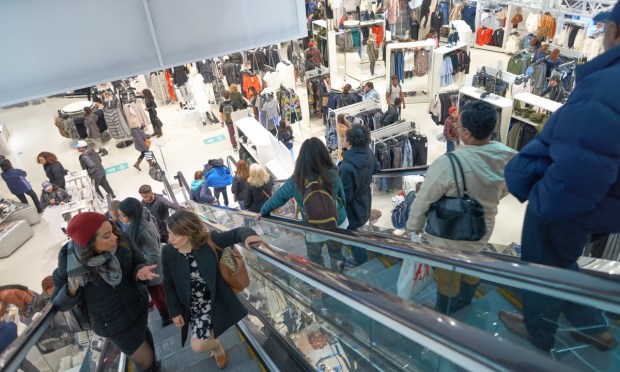Fed’s Beige Book Cites Weak Discretionary Spending

Eight times each year the Fed publishes what’s known as the Beige Book — a qualitative take from each of the 12 federal bank districts.
The assessments cover everything from auto loans to commercial real estate, and critically, a broad assessment of the state of the economy, with a nod toward consumer-related activity too.
This time around, in the latest report that covers February and March, the majority of reporting Fed banks said that overall “economic activity expanded slightly.” That’s the take from 10 out of the dozen districts.
Consumer Pressures
But there are some signs that consumers — the engine that powers growth — are hitting some speed bumps, at least in terms of opening their wallets.
“Consumer spending barely increased overall, but reports were quite mixed across Districts and spending categories. Several reports mentioned weakness in discretionary spending, as consumers’ price sensitivity remained elevated,” the report noted.
Headed into the first quarter, PYMNTS Intelligence found that consumers were tapping into their savings to handle life’s volatility, as 31% cited emergency spending and 24% cited major life events, such as weddings or home purchases, as reasons for significant reductions in savings.
PYMNTS found that 51% of Generation Z consumers specifically attribute their savings depletion to discretionary spending. In March, according to the latest retail sales data from the government number of categories saw sales decline during the month, as measured from February: sporting goods, hobbies, musical instruments and books fell by 1.8%, clothing stores were down 1.6%, and electronics and appliances dropped 1.2%.
Eyeing Credit Tightening
As its district is arguably the financial epicenter of the U.S., the New York Fed remarked that activity in the region’s broad finance sector “continued to weaken in the latest reporting period.” There was weaker demand for consumer loans and “banking contacts indicated that credit standards continued to tighten for business loans and commercial mortgages.”
The observations dovetail with PYMNTS reporting this week, which detailed that, with the March quarter in the rearview mirror (covering the same period as the Fed’s Beige Book), the largest U.S. banks are reporting a slowdown in lending. PNC, by way of example, said that lending was down 1% year over year.
One wonders if these observations might make for a bumpy road for enterprises. Separate PYMNTS data noted that revenues for more than half of Main Street’s smaller firms are growing faster than the nominal GDP growth in the last quarter. Mom-and-pop shops are on an upward trajectory, with revenues growing by 6% and GDP increasing by 5.7%.
As the Beige Book outlined: “Another frequent comment was that firms’ ability to pass cost increases on to consumers had weakened considerably in recent months, resulting in smaller profit margins.”
As 2023 gave way to the current year, as PYMNTS found, 38% of Main Street SMBs that sell mostly in physical stores said their revenues will grow in 2024. That share rose to 57% for those who sell mostly online.
And as detailed here, inflation is top of mind for the small businesses that power Main Street and the U.S. economy at large. Small business optimism hit its lowest level in more than a decade, according to a survey from the National Federation of Independent Businesses.

